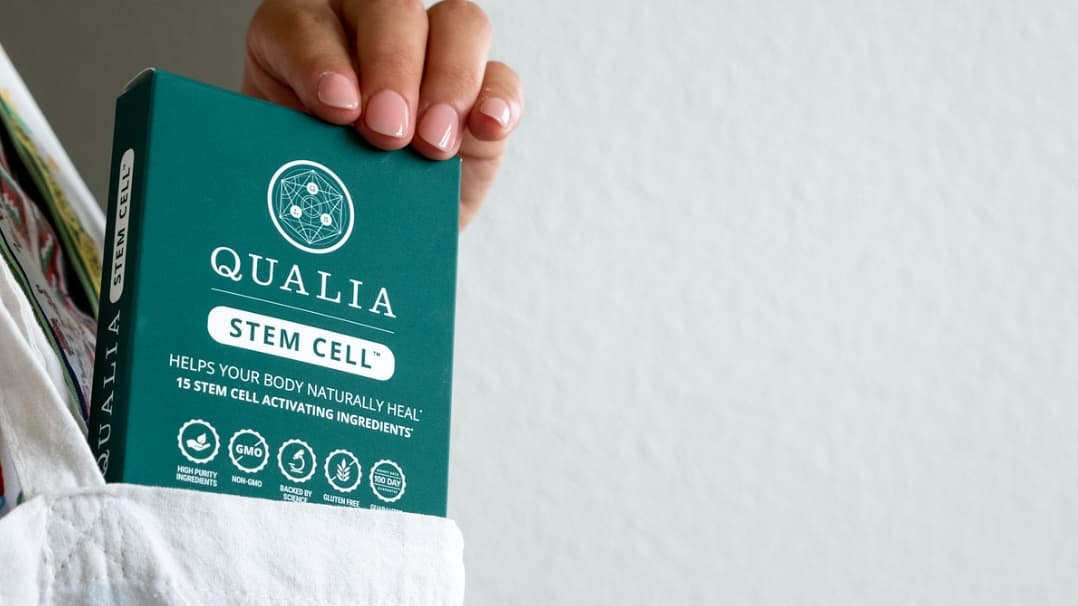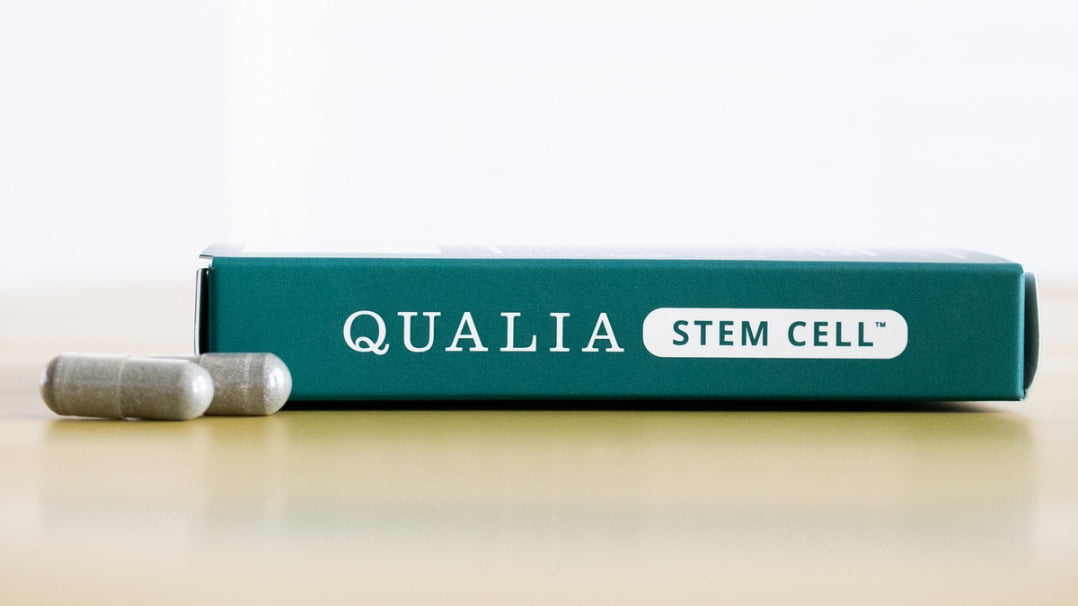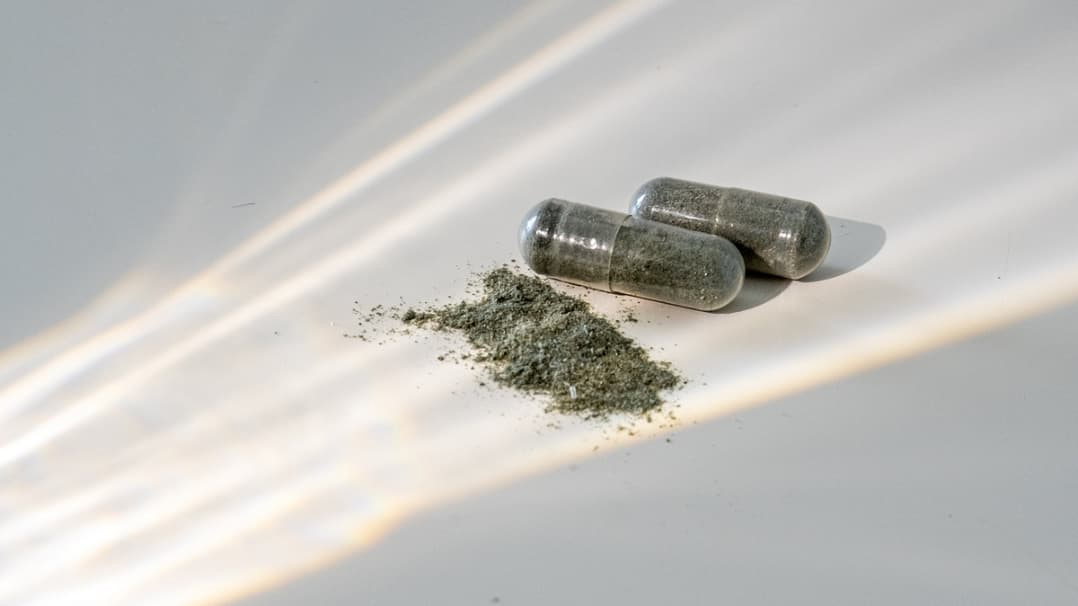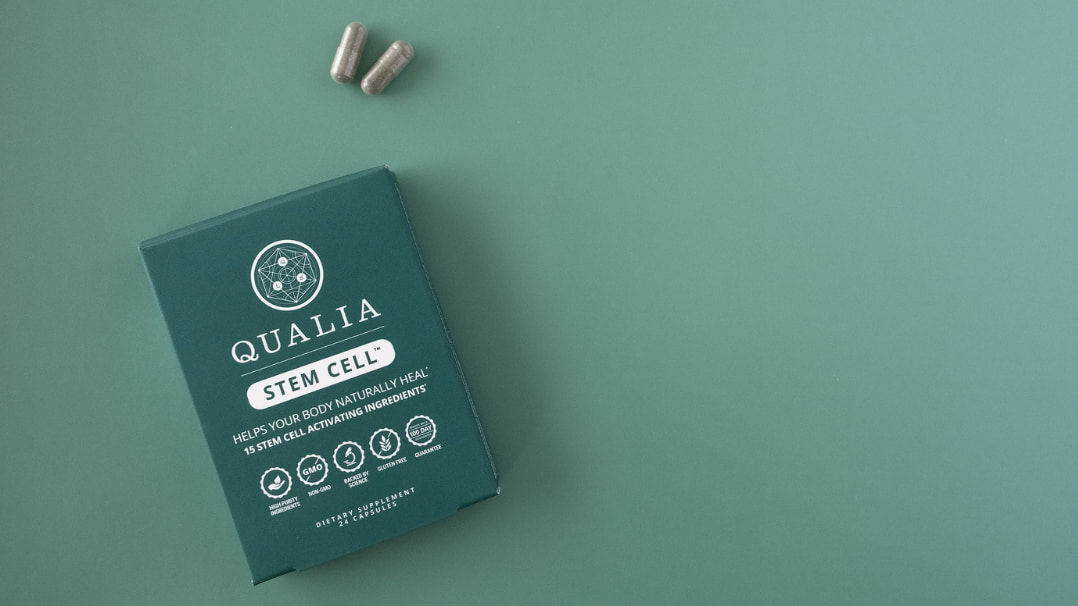Vitamin C (as Ascorbic Acid)

Vitamin C, also known as ascorbic acid/ascorbate, is a vitamin naturally found in a wide variety of fruit and vegetables, particularly citrus fruit (orange, grapefruit), peppers, broccoli, brussels sprouts, and strawberries, for example. Vitamin C is an essential vitamin because, unlike most animals, the human body is unable to synthesize vitamin C and must therefore obtain it from the diet. Vitamin C is a potent antioxidant and plays an important role in cellular antioxidant defenses. Vitamin C, in the form of ascorbate, is also a co-substrate for enzymes needed to produce collagen, carnitine, and the neurotransmitter dopamine [1–3].*
TOP BENEFITS OF VITAMIN C
Supports antioxidant defenses *
Supports general immune health *
Supports skin health *
QUALIA’S VITAMIN C SOURCING
Vitamin C is a non-GMO, gluten-free, and vegan ingredient.
VITAMIN C FORMULATING PRINCIPLES AND RATIONALE
Vitamin C is an essential nutrient, which means it can’t be produced by the body and must be obtained consistently through the diet, since it can’t be stored in the body. The recommended daily allowance (RDA) for vitamin C in non-smoking healthy adults is 75 mg for females and 90 mg for males. According to 2001-02 NHANES data the average intake is about 85 mg in females and 110 mg in males. But about 3 out of 10 adults consume less than the recommended amount, while persons in the top 10% of dietary intake would consume about 200 mg on average. Qualia believes vitamin C follows a threshold response (see Qualia Dosing Principles), which means the majority of functional benefits occur in a range between the RDA amount and the highest dietary intake. Some of the evidence for this threshold response is that plasma vitamin C concentration rises steeply at intakes between 30 and 100 mg a day, and immune cells (e.g., neutrophils, monocytes, and lymphocytes) become saturated at 100 mg daily [4]. We opted for a serving of vitamin C that, when added to what would be in an average diet, comfortably places a person at the high end of this threshold response range.*
VITAMIN C KEY MECHANISMS
Supports antioxidant defenses*
Free radical scavenger* [1]
Supports antioxidant defenses* [5]
Counters oxidative stress and oxidative cellular damage* [1,5]
Supports brain function*
Supports L-DOPA synthesis* [6]
Cofactor for dopamine-β-hydroxylase (which converts dopamine to noradrenaline)* [2]
Supports dopamine signaling* [7]
Supports noradrenaline signaling* [8]
Influences glutamate signaling* [9–11]
Influences serotonin (5-HT) signaling* [12]
Supports acetylcholine signaling* [8,13,14]
Supports neuroendocrine signaling* [15–20]
Supports antioxidant defenses in the brain* [5,21]
Supports normal neuroprotective functions* [5,10,21–24]
Supports neuronal structure* [2,25–27]
Supports a healthy mood*
Supports positive affect* [5,21,28–32]
Supports healthy immune function*
Supports general immune health* [33,34]
Supports innate immunity* [4,35–37]
Supports adaptive immunity* [4,35,37,38]
Supports skin health*
Supports skin antioxidant defenses* [39]
Supports skin in adapting to UV radiation* [40–42]
Supports collagen synthesis* [43]
Supports elastin synthesis* [44]
*These statements have not been evaluated by the Food and Drug Administration. This product is not intended to diagnose, treat, cure, or prevent any disease.
REFERENCES
[1]S.J. Padayatty, A. Katz, Y. Wang, P. Eck, O. Kwon, J.-H. Lee, S. Chen, C. Corpe, A. Dutta, S.K. Dutta, M. Levine, J. Am. Coll. Nutr. 22 (2003) 18–35.
[2]R. Figueroa-Méndez, S. Rivas-Arancibia, Front. Physiol. 6 (2015) 397.
[3]S.J. Ballaz, G.V. Rebec, Pharmacol. Res. 146 (2019) 104321.
[4]M. Levine, C. Conry-Cantilena, Y. Wang, R.W. Welch, P.W. Washko, K.R. Dhariwal, J.B. Park, A. Lazarev, J.F. Graumlich, J. King, L.R. Cantilena, Proc. Natl. Acad. Sci. U. S. A. 93 (1996) 3704–3709.
[5]M. Moretti, A. Colla, G. de Oliveira Balen, D.B. dos Santos, J. Budni, A.E. de Freitas, M. Farina, A.L. Severo Rodrigues, J. Psychiatr. Res. 46 (2012) 331–340.
[6]G. Seitz, S. Gebhardt, J.F. Beck, W. Böhm, H.N. Lode, D. Niethammer, G. Bruchelt, Neurosci. Lett. 244 (1998) 33–36.
[7]R.C. Pierce, J.K. Rowlett, G.V. Rebec, M.T. Bardo, Brain Res. 688 (1995) 21–26.
[8]C.H. Kuo, F. Hata, H. Yoshida, A. Yamatodani, H. Wada, Life Sci. 24 (1979) 911–915.
[9]M.I. Sandstrom, G.V. Rebec, BMC Neurosci. 8 (2007) 32.
[10]M.D. Majewska, J.A. Bell, E.D. London, Brain Res. 537 (1990) 328–332.
[11]E.A. Kiyatkin, G.V. Rebec, Brain Res. 812 (1998) 14–22.
[12]R.D. Todd, P.A. Bauer, J. Neurochem. 50 (1988) 1505–1512.
[13]C.H. Kuo, H. Yoshida, Jpn. J. Pharmacol. 30 (1980) 481–492.
[14]D. Dhingra, M. Parle, S.K. Kulkarni, J. Med. Food 9 (2006) 281–283.
[15]J.L. Bény, A.J. Baertschi, Endocrinology 109 (1981) 813–817.
[16]M. Kawaguchi, F. Hayakawa, Y. Kamiya, T. Fujii, J. Ito, N. Sakuma, T. Fujinami, Life Sci. 52 (1993) 975–979.
[17]B.T. Miller, T.J. Cicero, Brain Res. Bull. 19 (1987) 95–99.
[18]Z. Yang, D.L. Copolov, A.T. Lim, Brain Res. 706 (1996) 243–248.
[19]S. Karanth, W.H. Yu, A. Walczewska, C.A. Mastronardi, S.M. McCann, Proc. Natl. Acad. Sci. U. S. A. 98 (2001) 11783–11788.
[20]S. Karanth, W.H. Yu, A. Walczewska, C. Mastronardi, S.M. McCann, Proc. Natl. Acad. Sci. U. S. A. 97 (2000) 1891–1896.
[21]M. Moretti, J. Budni, D.B. Dos Santos, A. Antunes, J.F. Daufenbach, L.M. Manosso, M. Farina, A.L.S. Rodrigues, J. Mol. Neurosci. 49 (2013) 68–79.
[22]S. Rosales-Corral, D.-X. Tan, R.J. Reiter, M. Valdivia-Velázquez, G. Martínez-Barboza, J.P. Acosta-Martínez, G.G. Ortiz, J. Pineal Res. 35 (2003) 80–84.
[23]M.D. Majewska, J.A. Bell, Neuroreport 1 (1990) 194–196.
[24]A. Atlante, S. Gagliardi, G.M. Minervini, M.T. Ciotti, E. Marra, P. Calissano, J. Neurochem. 68 (1997) 2038–2045.
[25]C.F. Eldridge, M.B. Bunge, R.P. Bunge, P.M. Wood, The Journal of Cell Biology 105 (1987) 1023–1034.
[26]J.-Y. Lee, M.-Y. Chang, C.-H. Park, H.-Y. Kim, J.-H. Kim, H. Son, Y.-S. Lee, S.-H. Lee, J. Neurosci. Res. 73 (2003) 156–165.
[27]K. Oyarce, C. Silva-Alvarez, L. Ferrada, F. Martínez, K. Salazar, F. Nualart, Mol. Neurobiol. 55 (2018) 1136–1149.
[28]S. Brody, Biol. Psychiatry 52 (2002) 371–374.
[29]J.M. Pullar, A.C. Carr, S.M. Bozonet, M.C.M. Vissers, Antioxidants (Basel) 7 (2018).
[30]S. Gariballa, Int. J. Vitam. Nutr. Res. 84 (2014) 12–17.
[31]M. Moretti, J. Budni, C.M. Ribeiro, A.L.S. Rodrigues, Eur. J. Pharmacol. 687 (2012) 21–27.
[32]R.W. Binfaré, A.O. Rosa, K.R. Lobato, A.R.S. Santos, A.L.S. Rodrigues, Prog. Neuropsychopharmacol. Biol. Psychiatry 33 (2009) 530–540.
[33]N. Mikirova, R. Hunninghake, Med. Sci. Monit. 20 (2014) 725–732.
[34]C.S. Johnston, G.M. Barkyoumb, S.S. Schumacher, Nutrients 6 (2014) 2572–2583.
[35]P. Tauler, A. Aguiló, I. Gimeno, A. Noguera, A. Agustí, J.A. Tur, A. Pons, Free Radic. Res. 37 (2003) 931–938.
[36]G. Heuser, A. Vojdani, Immunopharmacol. Immunotoxicol. 19 (1997) 291–312.
[37]R. Anderson, R. Oosthuizen, R. Maritz, A. Theron, A.J. Van Rensburg, Am. J. Clin. Nutr. 33 (1980) 71–76.
[38]W. Prinz, R. Bortz, B. Bregin, M. Hersch, Int. J. Vitam. Nutr. Res. 47 (1977) 248–257.
[39]A.-C. Lauer, N. Groth, S.F. Haag, M.E. Darvin, J. Lademann, M.C. Meinke, Skin Pharmacol. Physiol. 26 (2013) 147–154.
[40]B. Eberlein-König, M. Placzek, B. Przybilla, J. Am. Acad. Dermatol. 38 (1998) 45–48.
[41]M. Placzek, S. Gaube, U. Kerkmann, K.-P. Gilbertz, T. Herzinger, E. Haen, B. Przybilla, J. Invest. Dermatol. 124 (2005) 304–307.
[42]H. Mireles-Rocha, I. Galindo, M. Huerta, B. Trujillohernández, A.E. T, R. Cortés-Franco, Acta Derm. Venereol. 82 (2002) 21–24.
[43]D. Crisan, I. Roman, M. Crisan, K. Scharffetter-Kochanek, R. Badea, Clin. Cosmet. Investig. Dermatol. 8 (2015) 463–470.
[44]A. Hinek, H.J. Kim, Y. Wang, A. Wang, T.F. Mitts, J. Dermatol. Sci. 75 (2014) 173–182.







